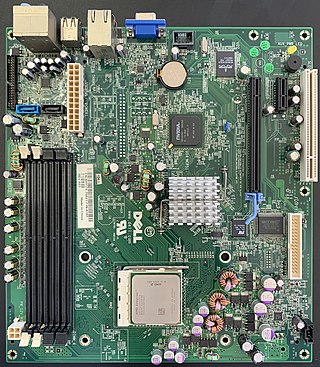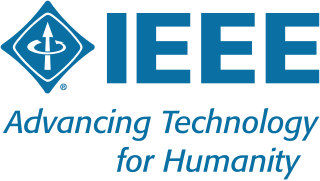Related Research Articles

Engineering is the practice of using natural science, mathematics, and the engineering design process to solve technical problems, increase efficiency and productivity, and improve systems. Modern engineering comprises many subfields which include designing and improving infrastructure, machinery, vehicles, electronics, materials, and energy systems.

Electrical engineering is an engineering discipline concerned with the study, design, and application of equipment, devices, and systems which use electricity, electronics, and electromagnetism. It emerged as an identifiable occupation in the latter half of the 19th century after the commercialization of the electric telegraph, the telephone, and electrical power generation, distribution, and use.

Mechanical engineering is the study of physical machines that may involve force and movement. It is an engineering branch that combines engineering physics and mathematics principles with materials science, to design, analyze, manufacture, and maintain mechanical systems. It is one of the oldest and broadest of the engineering branches.

Computer engineering is a branch of computer science and electronic engineering that integrates several fields of computer science and electronic engineering required to develop computer hardware and software. Computer engineering is referred to as computer science and engineering or Electrical and Computer engineering at some universities

The Institute of Electrical and Electronics Engineers (IEEE) is an American 501(c)(3) professional association for electronics engineering, electrical engineering, and other related disciplines.

The Indian Institute of Technology Bombay is a public research university and technical institute in Mumbai, Maharashtra, India.

Madras Institute of Technology (MIT) is an engineering institute located in Chromepet, Chennai, India. It is one of the four autonomous constituent colleges of Anna University. It was established in 1949 by Chinnaswami Rajam as the first self-financing engineering institute in the country and later merged with Anna University. The institute was among the first educational institutions in India to offer new areas of specialization, such as aeronautical engineering, automobile engineering, electronics engineering and instrumentation technology. Madras Institute of Technology (MIT) was the first self-financing institute opened in India.

Anna University is a public state university located in Chennai, Tamil Nadu, India. The main campus is in Guindy. It was originally established on 4 September 1978 and is named after C.N.Annadurai, the former Chief Minister of Tamil Nadu.
A Bachelor of Technology is an undergraduate academic degree in the field of engineering and technology conferred after the completion of a four-to-five-year program of studies at an accredited university or accredited higher education institution, such as a college or university in India and other countries. In India, this is a four-year undergraduate degree awarded by few universities and colleges which is equivalent to four-year Bachelor of Engineering with Honours.
A Bachelor of Engineering, Bachelor of Science in Engineering (BSE), or Bachelor of Science and Engineering is an undergraduate academic degree awarded to a college graduate majoring in an engineering discipline at a higher education institution.

Established in 1918, Tallinn University of Technology is the only technical university in Estonia. TalTech, in the capital city of Tallinn, is a university for engineering, business, public administration and maritime affairs. TalTech has colleges in Tartu and Kohtla-Järve. Despite the similar names, Tallinn University and Tallinn University of Technology are separate institutions.
An institute of technology is an institution of tertiary education that specializes in engineering, technology, applied science, and natural sciences.
Alagappa College of Technology is an educational institution located in Chennai, Tamil Nadu, India that offers higher education in engineering, technology and allied sciences. The college was established in 1944 and was integrated with Anna University in 1978 from University of Madras as a constituent part of Anna University within its Guindy Campus.

Applied physics is the application of physics to solve scientific or engineering problems. It is usually considered a bridge or a connection between physics and engineering. "Applied" is distinguished from "pure" by a subtle combination of factors, such as the motivation and attitude of researchers and the nature of the relationship to the technology or science that may be affected by the work. Applied physics is rooted in the fundamental truths and basic concepts of the physical sciences but is concerned with the utilization of scientific principles in practical devices and systems and with the application of physics in other areas of science and high technology.

Science, technology, engineering, and mathematics (STEM) is an umbrella term used to group together the distinct but related technical disciplines of science, technology, engineering, and mathematics. The term is typically used in the context of education policy or curriculum choices in schools. It has implications for workforce development, national security concerns, and immigration policy, with regard to admitting foreign students and tech workers.

The Ministry of Chemicals and Fertilizers in India is the federal ministry with administrative purview over three departments namely:

Periyar Maniammai Institute of Science & Technology, formerly Periyar Maniammai College of Technology for Women and Periyar Maniammai University (PMU), is a private deemed-to-be university headquarters is in the town of Vallam in Thanjavur, Tamil Nadu, India. The campus is on 115 acres (47 ha) 45 km (28 mi) east of Tiruchirapalli and 10 km (6.2 mi) west of Thanjavur.
Science Publishing Group (SPG) is an open-access publisher of academic journals and books established in 2012. It has an address in New York City and many of its journals are named American Journal of..., but the company is actually based in Pakistan. The company has been criticized for predatory publishing practices. As of 2019, it publishes 430 journals in various fields.